Indicator scoreboardEMU — April seasonally adjusted unemployment rate rose to 8.3 percent from a revised 8.2 percent rate in March. The entire unemployment series was revised downward, largely due to new methodology in Spain. Spain continued to show the highest unemployment rate at 11.3 percent. This was followed by France (9.2 percent), Finland (9.1 percent), Germany (8.1 percent) and Belgium (6.8 percent). Luxembourg showed the lowest unemployment rate (2.2 percent) followed by Austria (4.0 percent). It is estimated that 11.5 million men and women were unemployed in April. 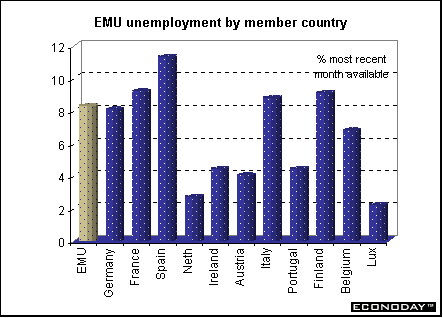 April industrial producer prices rose 0.3 percent primarily due to increased energy prices. On the year, the PPI sank 0.7 percent. As in March, energy prices were the major contributor to higher producer prices, rising by 1.6 percent. However when compared with last year, energy prices declined 3.9 percent. Excluding energy prices, the PPI rose 0.2 percent and 0.2 percent on the year. Prices in all major categories except capital goods rose. 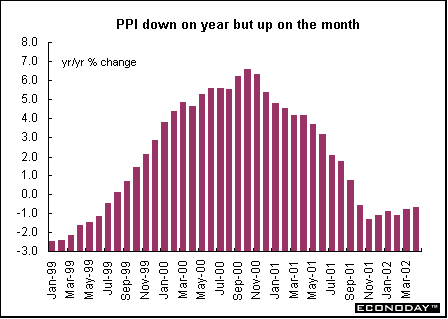 May seasonally adjusted Reuters manufacturing purchasing managers index rose to 51.5. This was the seventh consecutive rise. An index level above 50 signals expansion, below 50, contraction. The higher the index is above 50, the faster the expansion. Country results remained mixed, with Germany still contracting. Input prices rose to 56.0 from 53.9 in the previous month — the fastest pace in 15 months. 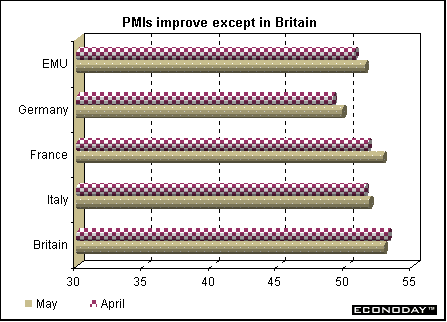 May seasonally adjusted Reuters services activity index fell to 52.1 from 53.3 in the prior month. Shrinking German services activity slowed the pace of overall sector growth. Growth slowed in France and Ireland. Despite the softer growth, this was still the fifth month of service sector expansion. Slower growth lessened pressure on prices charged for services, as the index dropped from 53.3 to 50.9, the slowest rate of increase since December. Labor and materials costs continued to outpace prices charged. The composite index for services and industry dipped to 52.6 from 53.2 in April. Germany — April seasonally adjusted manufacturing orders jumped 2.3 percent and 1.3 percent when compared with last year. Domestic orders jumped 4.5 percent but foreign orders fell 0.8 percent. Foreign demand fell 4.1 percent in the important investment goods category. The rise in domestic demand may partly reflect a stocking up in anticipation of an IG Metall strike, which lasted for 10 days beginning May 6. The April rise results exclusively from a 3.2 percent orders rise in west Germany, while orders in east Germany fell 9.6 percent on the month.  May seasonally adjusted unemployment jumped by 60,000 in May. The pan German unemployment rate rose to 9.7 percent from 9.6 percent in April. The unemployment rate rose to 7.8 percent from 7.7 percent in west Germany while climbing to 18 percent from 17.8 percent in the east. A number of special factors added to the sharp rise in joblessness, including the effects of ongoing wage conflicts that caused employers to reduce hiring or increase lay-offs, especially in the construction sector. Moreover, under a new jobs law there was a marked shift to unemployed status from non-worker status. 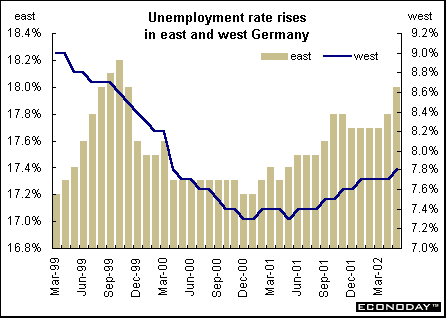 Britain — May Halifax house price index rose 4.2 percent and soared 18.5 percent above the level of a year earlier. A combination of very low interest rates and unemployment has boosted housing demand, which together with a shortage of suitable properties for sale, have driven prices up sharply. 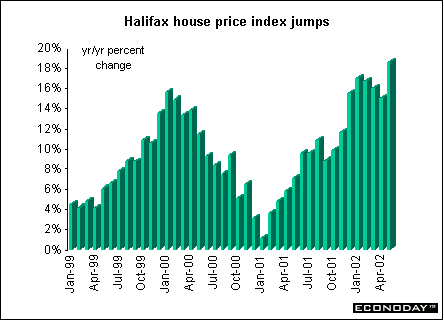 The May Chartered Institute of Purchasing and Supply purchasing managers' index slipped to 52.9 from April’s 53.2 level. The measure of manufacturing output was the strongest in two-and-a-half years with steady growth in export orders. But there was a slowdown in the growth of domestic orders, and the index of employment fell. May Chartered Institute of Purchasing and Supply service sector activity index jumped to 56.7, from 54.5 in April. This was the highest level since February 2001. The latest increase in service sector activity reflected increased levels of new business. Asia Japan — First quarter seasonally adjusted capital spending by companies (excluding banks, insurers and other financial firms) fell 5.2 percent and 16.8 percent when compared with last year. Spending by all types of companies, including financial institutions, probably fell 1.1 percent after a record 12 percent drop in the fourth quarter. Business spending accounts for about 15 percent of gross domestic product. First quarter real gross domestic product jumped 1.4 percent but continued to fall when compared with the previous year. On the year, GDP sank 1.7 percent. On an annualized basis — the basis that is comparable to the U.S. results — GDP jumped 5.7 percent, outdoing the 5.6 percent rise in U.S. GDP. This was the first quarter in four that GDP rose. Recovering overseas economies have created more demand for Japanese exports and have helped fuel a pickup in industrial output. Exports jumped 6.4 percent in the Jan-to-March quarter from the previous quarter, rising for the first time since the Jul-to-Sept 2000 quarter. Capital spending sank 3.2 percent. The decline followed a 12.0 percent plunge in investment in the Oct-to-Dec quarter. Public investment increased 4.1 percent from the last three months of 2001 as regional governments used up the remainder of their budgets for the fiscal year that ended in March. The government's second supplementary budget from last fiscal year also kicked in during March, giving public spending an additional boost. Government investment sank 6.4 percent from a year earlier. The GDP deflator, a measure of inflationary pressures, fell 0.9 percent from a year earlier, the 16th straight decline. 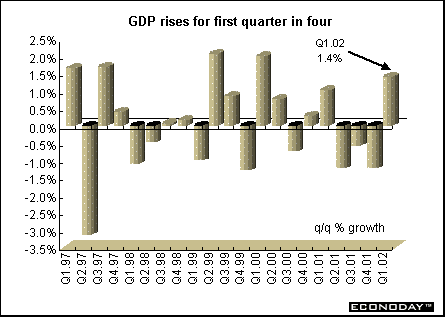 Australia — First quarter gross domestic product rose 0.9 percent and 4.2 percent when compared with last year. The price deflator for private final household consumption rose 0.9 percent and 2.5 percent on the year. Pacing Australia's first-quarter growth, household spending rose 1.4 percent, dwelling investment increased 4.3 percent and exports gained 4 percent. Government investment slumped 17 percent.  May seasonally adjusted unemployment rate remained at 6.3 percent for the third month. The number of employed rose by 44,400. The workforce participation rate, or the proportion of working-age persons at work or actively seeking work, rose to 63.6 percent from 63.4 percent in April. The total number of people employed was 9.31 million compared with 9.26 million in April. The number of people in full-time work rose 75,300 to 6.72 million in May, from 6.65 million in April. The number of people in part-time work fell 30,900 to 2.58 million in May. A sharp rise in Australia full-time jobs was the largest monthly increase since February 1995.  Americas Canada — May employment rose by an estimated 30,500, but the unemployment rate rose slightly to 7.7 percent. The May employment increase marked a fifth consecutive month of increases. Employment in goods-producing industries was up 9,300 on widespread gains in construction, utilities, agriculture and manufacturing. Service producing industries gained 21,300 jobs, with the largest increases in educational services and professional, scientific and technical services. 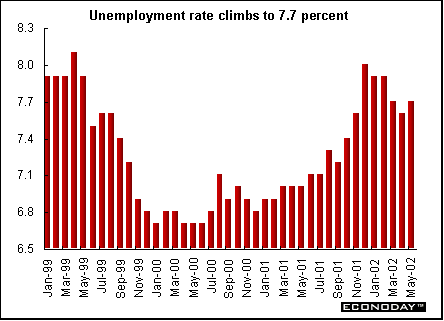
| ![[Back To Archive]](../../../images/backtoarchive.gif)